Online Testing
Overview
Online testing supports device simulation and application simulation. It offers scenarios such as data reporting and command delivery to test devices, profile files, and codecs.
You can use physical or virtual devices for online testing.
- When the device development is complete but the application development is not, you can add physical devices and use the application simulator to test devices, profile files, and codecs. The interface of online testing using a physical device is as follows:
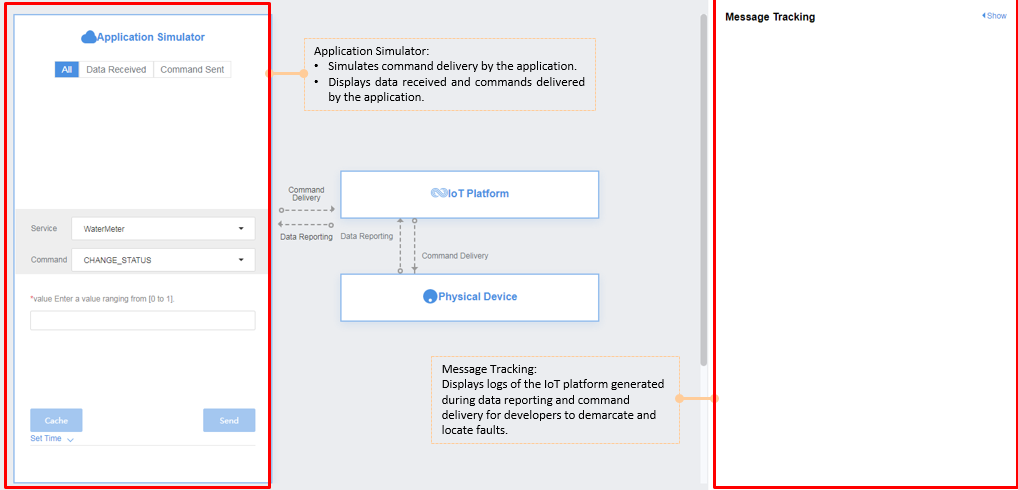
- When both device development and application development are not completed, you can create virtual devices and use the application simulator and device simulator to test profile files and codecs. The interface of online testing using a virtual device is as follows:
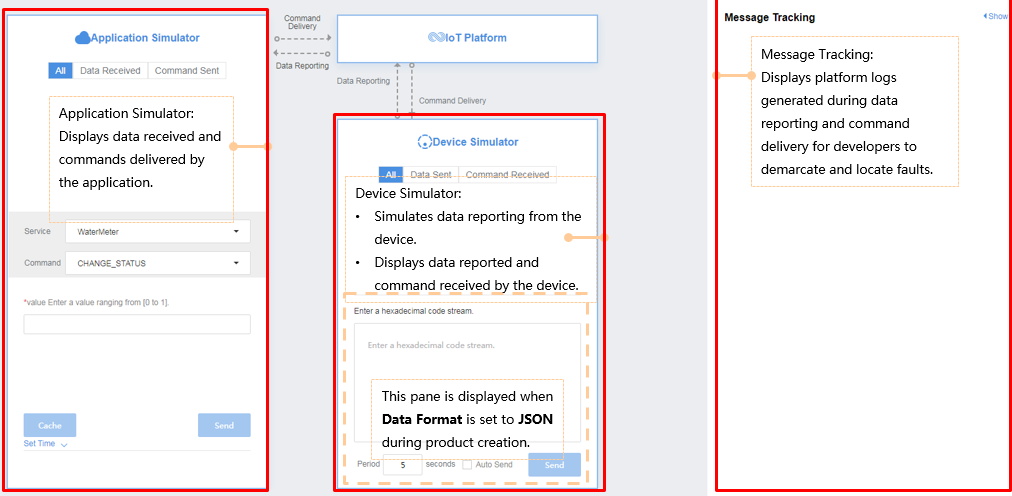
Using a Physical Device for Online Testing
- In the product development space, click Online Testing.

- Click Add at the row where Device List resides.

- In the Add Test Device dialog box displayed, select Yes, set the parameters, and click OK.
- Device Name can contain only letters, digits, and underscores (_) and must be unique in the product.
- Node ID must be set to a unique value, such as the IMEI or MAC address of the device.
- Choose Unencrypted or Encrypted based on site requirements.
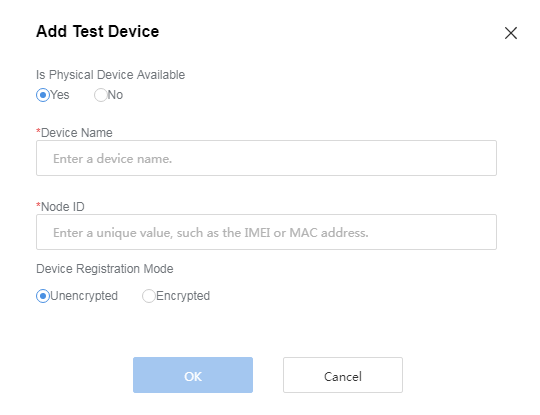
After the device is added, Device ID and PSK are returned. Keep the PSK securely as it is required when the device uses DTLS to connect to the IoT platform.
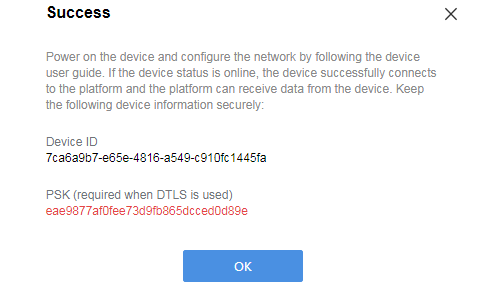
- In the device list, select the newly added physical device to enter the Online Testing page.

- Connect the device to the IoT platform and report data. View the data reporting result in Application Simulator and processing logs of the IoT platform in Message Tracking.
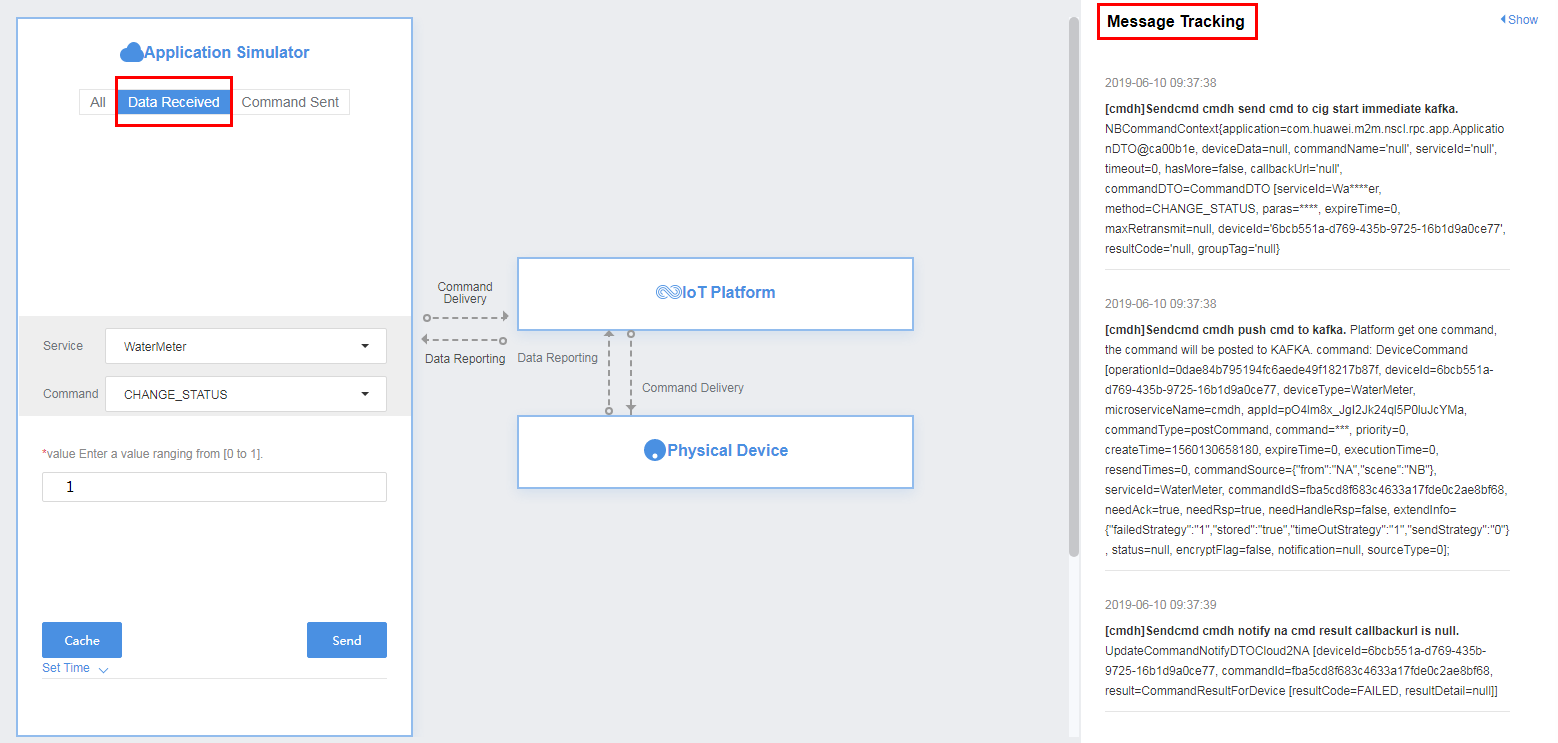
- Deliver a command in Application Simulator. View processing logs of the IoT platform in Message Tracking and check the received command on the device.
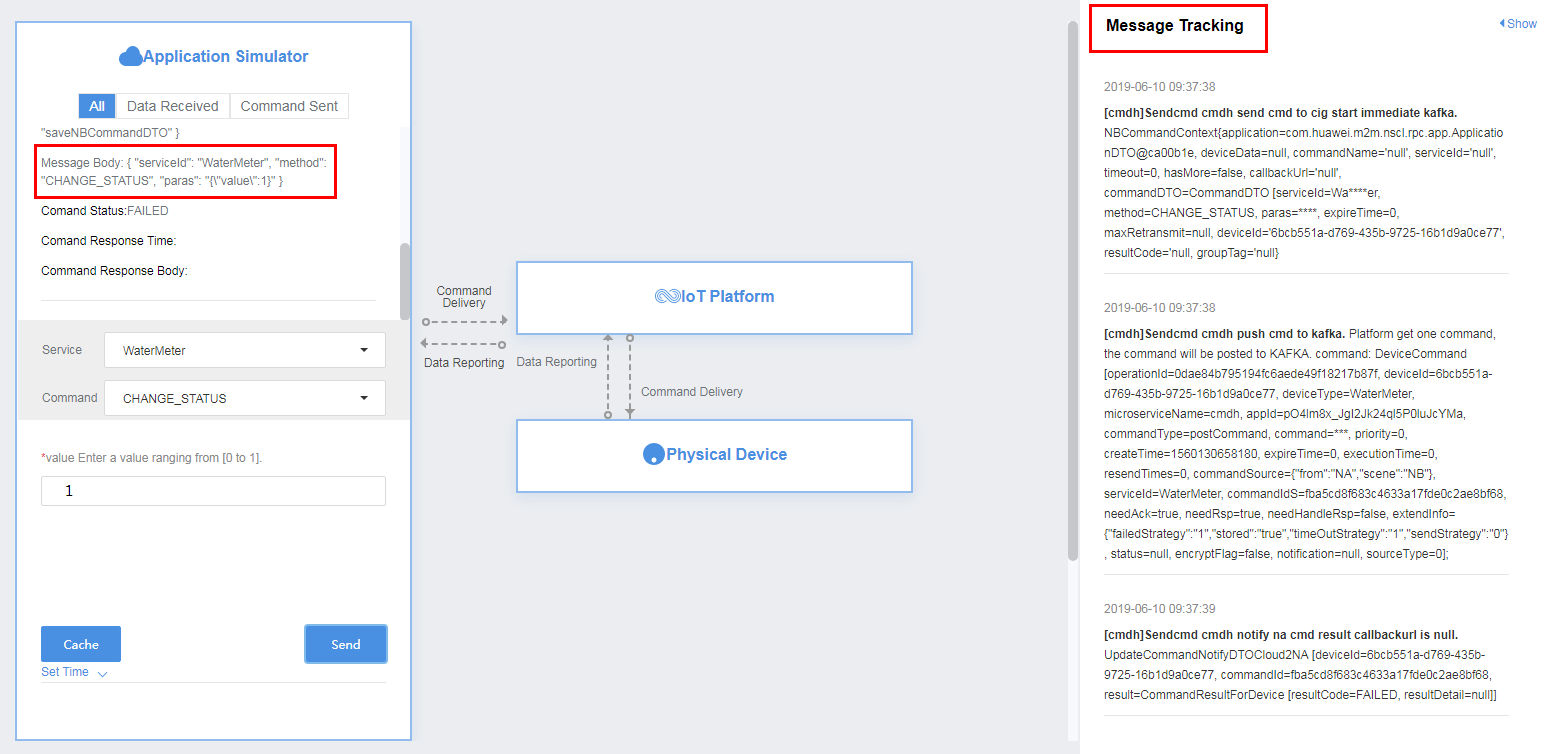
Using a Virtual Device for Online Testing
- In the product development space, click Online Testing.

- Click Add at the row where Device List resides.

- In the Add Test Device dialog box displayed, select No and click OK.
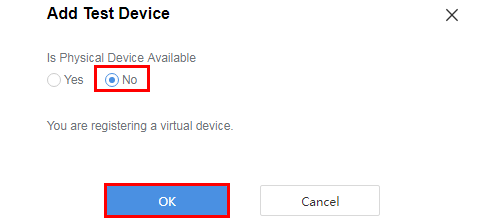
- In the device list, select the newly added virtual device to enter the Online Testing page. The name of the virtual device is in the format of Product Name+Simulator. Only one virtual device can be added for each product.

- In Device Simulator, enter a hexadecimal code stream and click Send. Then, view the data reporting result in Application Simulator and processing logs of the IoT platform in Message Tracking.
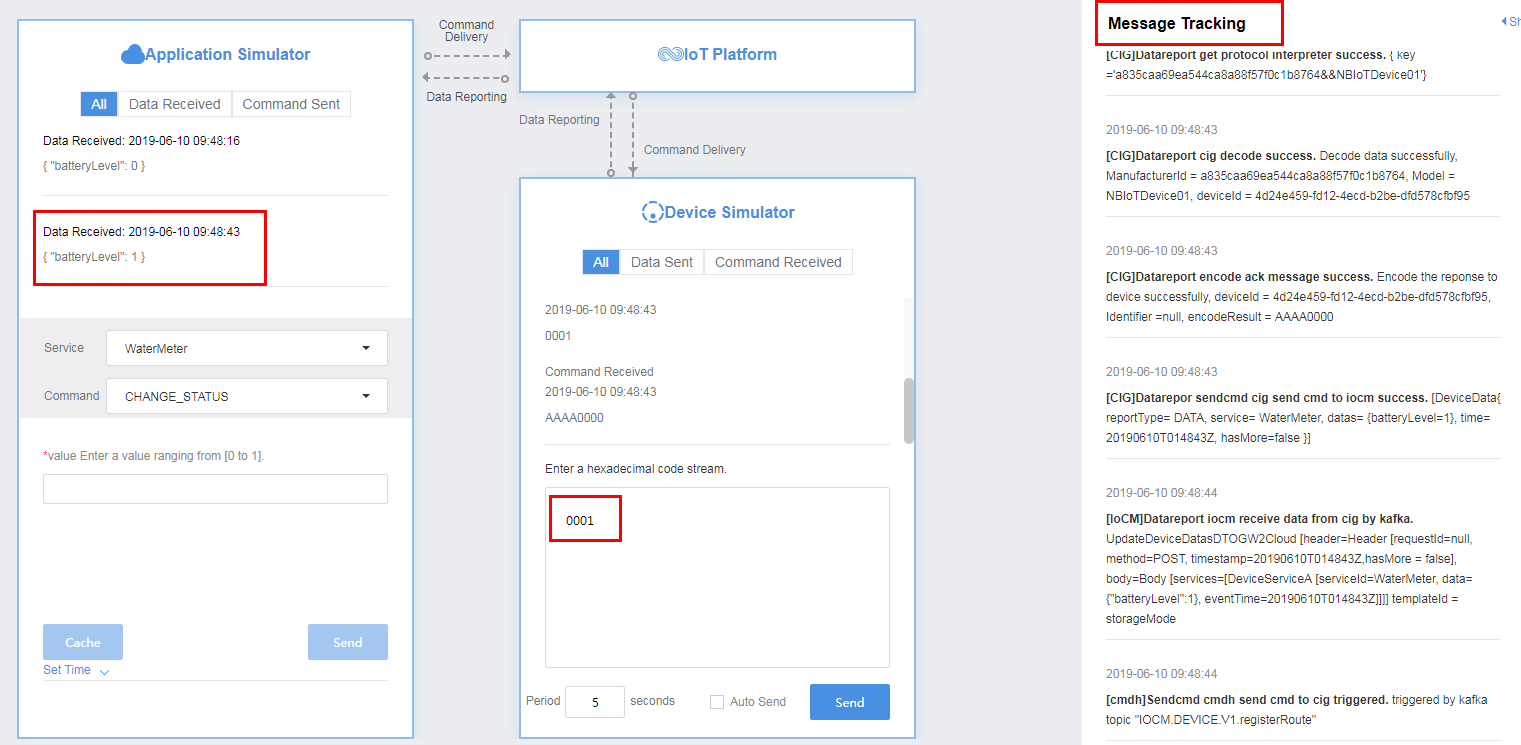
- Deliver a command in Application Simulator. View the received command (for example, a hexadecimal code stream) in Device Simulator and processing logs of the IoT platform in Message Tracking.
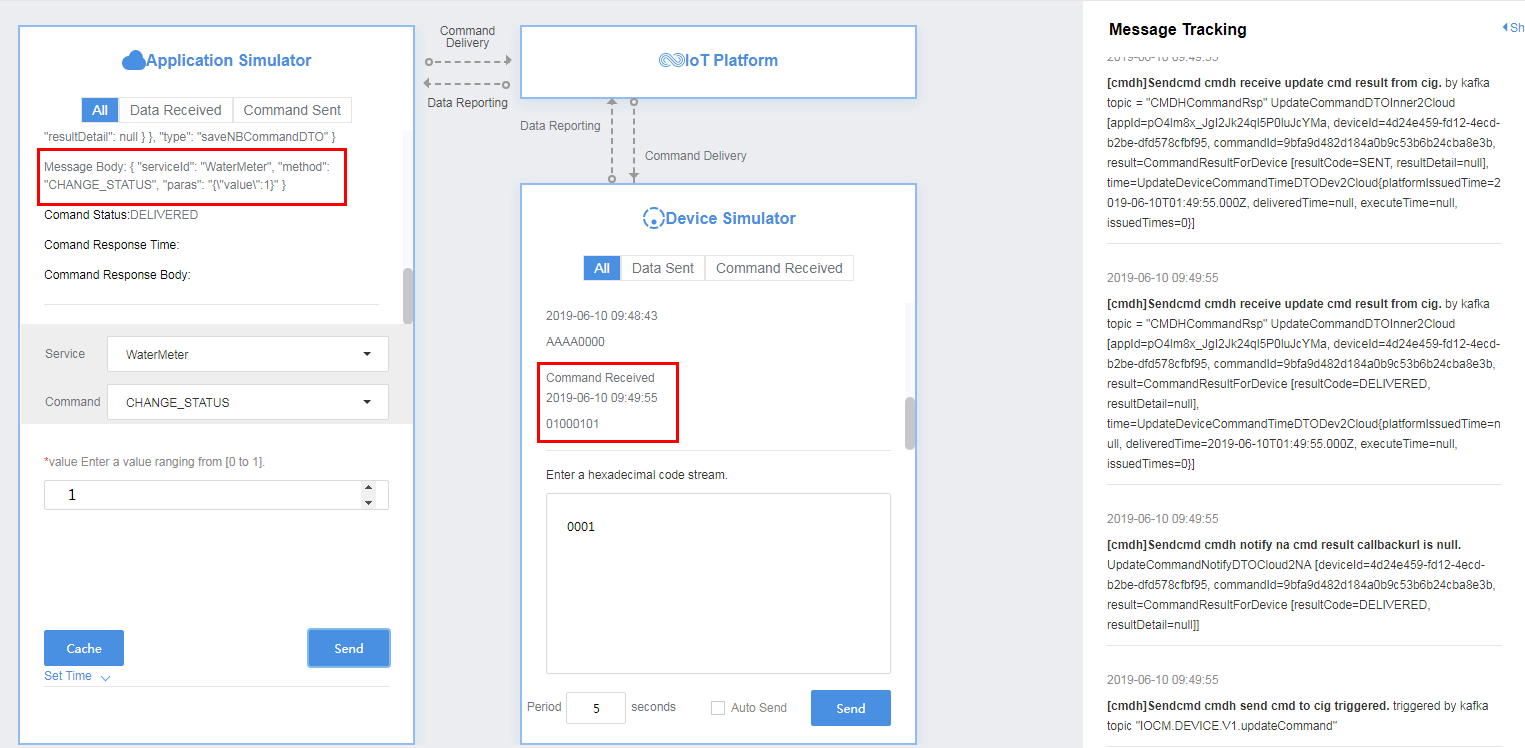
Feedback
Was this page helpful?
Provide feedbackThank you very much for your feedback. We will continue working to improve the documentation.See the reply and handling status in My Cloud VOC.
For any further questions, feel free to contact us through the chatbot.
Chatbot





